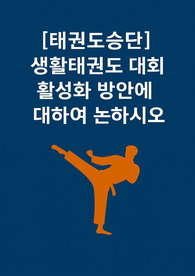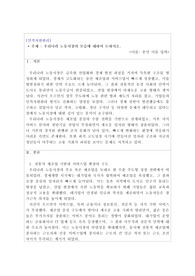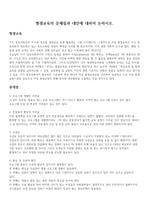

-
미리보기
소개
여성이 남성에 비해 겪는 각종 어려움으로 인해 각 기업에서 제대로 여성인력을 활용하지 못한다는 점을 시사하고, 그 이유와 현재 실태, 극복하기 위한 방안을 이론을 통해 풀어냈다.목차
Ⅰ. 여성인력 개발에 관한 연구의 배경 및 필요성과 목적
1. 여성인력 개발의 배경과 필요성
2. 여성인력 개발의 목적
Ⅱ. 여성인력의 개발에 관련된 이론
1. 취업까지의 과정에 관한 이론
2. 취업 이후 과정에 관한 이론
Ⅲ. 여성인력의 개발에 대한 현실적 상황과 장애요인
1. 통계적 보고
2. 조직 내 상황
3. 인적자원관리에 대한 태도
4. 그 외 -여성인력 개발의 장애요인
Ⅳ. 여성인력의 전략적 개발과 활성화 방안
1. 조직적 방안
2. 개인적 방안
3. 사회적 방안
Ⅴ. 결론
1. 연구의 시사점
2. 연구의 제한점
<참고문헌>본문내용
1. 여성인력 개발의 배경과 필요성
과거에 비해 여성인력의 활동이 활발해짐으로써 인적자원관리의 영역에서 여성인력의 관리가 중요하게 부각되게 되었다. 이렇게 여성인력에 대한 인적자원관리가 필요해진 배경으로는 ① 법률제정: 남녀고용평등법 등 남녀고용평등 준수를 위한 제도개선이 이루어지고 있다.
여성인력의 고학력화, 장기근속경향: 여성인력의 질적 수준이 향상되고 있으며, 여성인력에 대한 관리자의 근본적인 인식과 전략의 변화로 장기근속 경향을 보이고 있다. ② 정보통신기술의 발달 : 노동의 유연화가 가능해지며 비정규직 취업이 증가하고 이에 따라 여성고용의 빈도가 증가하고 있다. ③ 인력구조의 변화: 인구 통계적으로 여성의 인력이 증가하고 있으며, 경제활동인구의 감소는 여성인력의 활용으로 압박하고 있다. ④ 사고변화와 여성의 참여적 리더십 요구: 세계노동시장에서 시장 및 문화의 개방에 따라 방대한 규모의 여성 유휴인력의 활발한 경제활동을 행하는 참여적 리더십을 발휘하고 있으며 앞으로 그 강도가 강화될 것으로 예상된다. 와 같은 여건 변화가 영향을 미쳤다.
하지만 이러한 배경과는 다르게 2009년 OECD의 조사에 따르면 여성경제활동 참가율이 54.7%로 30개의 국가 중 28위로 최하위였던 2007년에 비해 두 단계 올랐다. 하지만 OECD평균인 61.3%에 못 미치면, 28위라는 순위는 한국이 아직도 많은 나라에 비해 여성의 경제활동 참가율이 저조하다는 것을 알 수 있다(OECD, 2009).
오늘날 많은 여성의 사회활동과 경제활동 참가율이 증가하고 학력도 높아지고 있지만, 아직도 많은 분야에서 여성은 남성에 비해 직장생활에 어려움을 겪고 있다. 이른바 성별 분업은 노동시장 내에서도 성서열적으로 직종을 분리하는데 영향을 미쳐 여성의 고용기회를 제한하고 있다.
많은 여성은 성차별적인 사회로 취업에 어려움을 겪고 있다. 또한, 취업이 된다 하더라고 여성에게 주어진 부서는 핵심부서가 아닌 변두리(fringe)부서로 주변부직군 부서를 전전하는 실정이다.참고자료
· 강우란(2002), 여성인력과 기업경쟁력, CEO Information, 제334호, 삼성경제연구소.
· 교육인적자원부(2009), 『과학기술통계연보』.
· 김기승(2003), 한국기업의 여성인력활용과 향후과제, LG경제연구원, 연구보고서.
· 김성국(1999),
· 김소영․이주희(1999), 『고용차별의 양태와 효과적 대처 방안』, 노동부.
· 김태홍․오정진(2000), 『남녀 고용평등 이행실태 분석 및 기업 인센티브제도 도입방안』, 노동부.
· 이재경․김선욱․임미영(2002), 『남녀차별 금지기준에 대한 규제순응도 조사』, 여성부.
· 이주희․전병유․강우란․송주연(2002), 『기업내 여성 인적자원관리 현황 및 활성화방안 연구』, 한국노동연구원.
· 통계청(2009), KOSIS.
· Astin, H.S.(1984), The meaning of work in women`s lives: a sociological model of career choice and work behavior, The Counseling Psychologist, 12, pp.117-126.
· Beck, E.H., Horan, P.M., & Tolbert, C.M., Ⅱ.(1978), Stratification in a dual economy, American Sociological Review, 43, pp.704-739.
· Betz, N.E., & Fitzgerald, L.F.(1987), The career psychology of women, New York: Academic Press.
· Bielby, W.T., & Baron, J.N.(1986), Men and Women at work: sex segregation and statistical discrimination, American Journal of Sociology, 91, pp.759-799.
· Blau, P.M., & Duncan, O.D(1967), American occupational structure, New York: Wiley & Sons.
· Borman, C.A., & Guido-Dibrito, F.(1986), The career development of women: Helping Cinderella lose her complex, Journal of Career Development, 12, pp.250-261.
· Chiu, Catherine W., & Ng, Warren, "Women friendly HRM good for QWL? The Case of Hong Kong Based Companies:, The International Journal of Human Resource Management, 1997, pp.644-659.
· Dalton, G.W., Thompson, P.H., & Price, R.L.(1977), The four stages of professional careers: a new look at performance by professionals, Organizational Dynamics, 6(1), pp.19-42.
· Deaux, K. Emswiller, T.(1974), "Explanation of Successful Performance on Sex-Linked Task: What is Skill for the Male is Luck for the Female", Journal of Personality and Social Psychology, Vol.29, pp.80-85.
· Ellig, J.R., & Morin, W.J.(20001), What every successful woman knows: 12 breakthrough strategies to get the power and ignite your career, New Your: McGraw-Hill.
· Farmer, H.S.(1985), Model of career and achievement motivation for women and men, Journal of Counseling Psychology, 32, pp.363-390.
· Farmer, H.S.(1976), "What Inhibits Achievement and Career Motication in Women?", The Counselling Psychologist, Vol.6, pp.12-13.
· Foster, M., Wallston, B., & Berger, M.(1980), Feminist orientation and job seeking behavior among dual career couples, Sex Roles, 6, pp.59-65.
· Garland, S.B.(1991, September 2), How to keep women mangers on the corporate ladder, Businees Week, pp.64.
· Gordon (1994)
· Gottfresdon, L.S.(1981), "Circumscription and Compromise : A Developmental Theory of Occupational Aspirations", Journal of Counselling Psychology, Vol.28, pp.545-579.
· Green, B.L. & Russo, N.F.(1993), Work and family roles: selected issues, in Denmark, F.1., & Palu야, M.A. (Eds), Psychology of women: a handbook of issues and theories (pp.685-719), Westport, CT: Greenwood Pess.
· Haxkett,G., & Betz, N.E.(1981), A self-efficacy approach to the career development of women, Journal of Vocational Behavior, 18, pp.326-229.
· Hammer-Higgins, P., & Atwood, V.A.(1989), The management game: and educational intervention for counseling women with non-traditional career goals, Career Development Quarterly, 38, pp.6-23.
· Holton, V.(1998), "An Equal Chance to Succeed? : Companing Women and Men in Management", Journal of Organizational Behavior, 26, pp.113-136.
· Huws (1990)
· Kanter, R.M.(1977), "Some Effects of Proportions on Group Life : Skewed SEX Rations and Responses to Token Women", American Journal of Sociology, Vol.82, pp.965-990
· Lampe, A.(2001), "Review of the Book Gender in the Workplace : A Case Study Approach", Gender, Work on Organization, Vol.8(3), pp.346-351.
· Morrison, A.M., White, R.P., Wan Welsor, E., & The Center for Creative Leadership(1987), Breaking the glass ceiling: can women reach the top of America`s largest corporations?, Reading, MA: Addison-Wesley.
· Ng, T.W.H., Eby, L.T., Sorensen, K.L., & Feldman, D.C.(2005), Predictors of objective and subjective career success: a meta-analysis, Personnel Psychology, 85(2), pp.367-408.
· Nieva, V.F., & Gutek, B.A.(1974), Women and Work : A Psychological Perspective, Praeger.
· OECD(2009), Employment Outlook.
· O`Leary, V.E.(1974), "Some Attitudinal Barriers to Occupational Aspirations in Women", Psychological Bulletin, Vol.81, pp.809-826.
· Powell,G.N.(1988), Women and men in management, Newbury Park, CA: Sage.
· Powell & Betterfield(1994)
· Rizzo, A.M., & Mendez, C.(1991), The integration of Women in management: a guide for human resources and management development specialists, New Your: Quorum Books.
· Russell, J.E.A.(1994), Career counseling for women in management, in Walsh, W.B. & Wsipow, S.H. (Eds.), Career counseling for women(pp.263-326), Hillsdale, NJ: Erlbaum.
· Schneider, K., & Swan, S.(1994), Job related, psychological, and health-related outcomes of sexual harassment, paper presented to the 9th Annual Conference of the Society for Industrial/Organizational Psychology, Nashville, TN.
· Schullman, S.L.(1991), Counseling psychologists working with sexual harrassment situations: parallel victimization processes, paper presented to the 99th Annual Conference of the American Psychological Association, Washington, D.C.
· Sewell, W.H., Haller, A.O., & Portes, A.(1969), The educational and early occupational attainment process, American Sociological Reciew, 34(1), pp.82-92.
· Sobol, M.G.(1963), Commitment to Work, in F.I. Nye & L.W. Hoffman(eds), The Employed Mother in America, McNally, pp40-63.
· Stover, D.L.(1997), The stratification of women within organizations, in Dubeck, P.J. & Borman, K. (Eds), Women and work: a reader, New Brunswick. NJ: Rutgers University Press.
· Sutton, C.D., & Moore, K.K.(1985), Executive women--20 years later, Harvard Business Review, 63, pp.42-66.
· UNDP(2002), Human development태그
-
자료후기
Ai 리뷰매번 새로운 인사이트를 제공해 주어 지식의 폭이 넓어지는 기분입니다. 지식판매자 덕분에 많은 것을 배우고 있습니다. 정말 추천하고 싶습니다! -
자주묻는질문의 답변을 확인해 주세요

꼭 알아주세요
-
자료의 정보 및 내용의 진실성에 대하여 해피캠퍼스는 보증하지 않으며, 해당 정보 및 게시물 저작권과 기타 법적 책임은 자료 등록자에게 있습니다.
자료 및 게시물 내용의 불법적 이용, 무단 전재∙배포는 금지되어 있습니다.
저작권침해, 명예훼손 등 분쟁 요소 발견 시 고객센터의 저작권침해 신고센터를 이용해 주시기 바랍니다. -
해피캠퍼스는 구매자와 판매자 모두가 만족하는 서비스가 되도록 노력하고 있으며, 아래의 4가지 자료환불 조건을 꼭 확인해주시기 바랍니다.
파일오류 중복자료 저작권 없음 설명과 실제 내용 불일치 파일의 다운로드가 제대로 되지 않거나 파일형식에 맞는 프로그램으로 정상 작동하지 않는 경우 다른 자료와 70% 이상 내용이 일치하는 경우 (중복임을 확인할 수 있는 근거 필요함) 인터넷의 다른 사이트, 연구기관, 학교, 서적 등의 자료를 도용한 경우 자료의 설명과 실제 자료의 내용이 일치하지 않는 경우
함께 구매한 자료도 확인해 보세요!
-
기업 환경변화에 따른 여성인력활용방안 3페이지
Ⅰ. 환경의 변화와 여성인력 중요성 1. 환경의 변화 1) 지식사회로의 변화 현대 기업 환경은 지식 창출, 활용, 공유, 확산 등이 중요하게 여겨지며, 전반적으로 육체노동보단 섬세한 정보처리능력, 창의력, 판단력 등이 중요시되고 있다. 이런 변화속에서 점차 남녀간 노동의 질적 차이는 없어져가고 있는 추세이다. 2) 능력 있는 여성의 급증 .. -
여성관리자의 유리천장 현상과 여성리더십 및 여성인력 활성화 전략 2페이지
1. 여성관리자의 경력개발 문제 최근의 여성인력의 사회 진출은 더 이상 예외적인 현상이 아니라 일반적인 현상으로 자리잡고 있다. 주요 영역에서 여성 인력의 사회 진출 및 성과 창출이 증가하는 만큼 이들이 직장내 관리자로 성장하는 21세기를 여성상사 시대라 할 만큼 여성관리자 육성, 리더십 개발이 중요과제로 대두되고 있다. 이러한 사회적 변화 흐름에 비.. -
여성인력-삼성SDS 15페이지
1.여성인력활용의 필요성 ◎여성의 고학력화가 급속히 진전 1) 1970년에는 대학 졸업생중 여성이 26%에 불과했으나 30년 만에 남녀 비율이 거의 50:50에 육박 (대학교육에서의 수적 남녀대등 단계 진입) 2) 대학원 졸업생에서 차지하는 여성비율도 1970년 10명중 1명에서 이제 3명중 1명 꼴 로 증가 .. -
여성의 경제활동 참가의 문제점 및 제고방안 18페이지
Ⅰ. 서론 우리나라의 경우 차별에 대한 논의는 여성고용을 둘러싸고 가장 활발하게 이루어져 왔다. 지난 20여 년 동안 여성의 평생평등 노동권의 확보를 지향하는 여성운동 및 여성노동운동의 진전과 남녀 고용평등법의 실시로 노동시장에서 직접적으로 성을 매개로 한, 의도적이고 직접적인 성 차별은 여전히 존재하기는 하나 감소되어 왔다.1) 개인이나 국가 발전의 .. -
[인적자원관리] 복리후생과 여성인력관리 7페이지
■ 복리후생 복리후생이란 조직이 구성원과 그의 가족의 생활수준을 증진시키기 휘하여 제공하는 임금 이외의 급여를 총칭하는 것으로 간접보상에 속한다. 복리후생은 조직이 자체의 부담과 책임 하에 마련하는 급여로서 구성원의 노동력 재생산, 즉 노동력의 확보, 유지, 배양을 원활히 하기 위한 것일 뿐만 아니라 경영공동체 형성의 기반으로서도 필요하다. 구성원의 복..
찾으시던 자료가 아닌가요?
지금 보는 자료와 연관되어 있어요!
문서 초안을 생성해주는 EasyAI


















